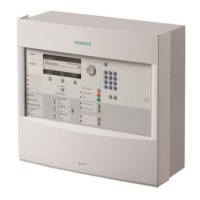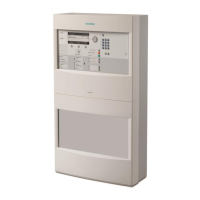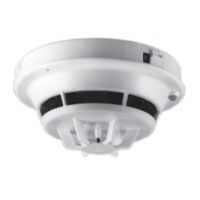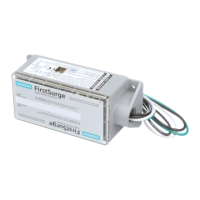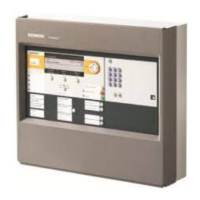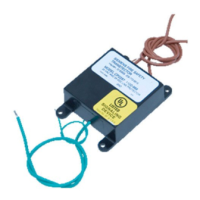Power supply check
13
Siemens Building Technologies 007833_a_en_--.doc
Fire & Security Products 03.2004
6 Power supply check
Current consumption
Perform measurements of current consumption during emergency power operation
and alarm mode at the highest alarm level (ALARM II and REMOTE ALARM).
Compare the measured value with the calculated value for emergency power ca-
pacity.
Batteries
Check of the batteries condition.
Measure batteries voltage (min. 23.0V), asymmetry max. 1V.
Measure charging current.
Battery load check.
A load check may only be carried out if the battery charging current is less than
50mA.
Procedure:
1. Disconnect the batteries from the charging unit. Do not overstress the battery
connections.
2. Connect the battery test set (5Ω resistor) via the two batteries and load for 30
minutes.
3. Measure the batteries voltage with connected test set.
During test, the battery voltage may not fall below 11.0V per battery and via
both batteries not below 23.0V. Batteries with lower voltage must be replaced.
Power supply fault
Check one by one the following conditions:
1. Mains connection interruption = MAINS FAILURE.
2. Battery disconnection = BATTERY FAULT.
Mains
Has the mains lead been correctly protected with fuses and labelled (as "Fire pro-
tection system") at the customer's power distribution panel?
Are any surge protectors used still functioning correctly? If the mains fuse has
blown due to lightning (ask customer), exchange surge protector.
Lithium batteries
Check the lithium auxiliary batteries by disconnecting the power supply for approx.
15 minutes.
After switching-on again, check the date, time and fault message. If there is any
loss of date, replace the corresponding unit.
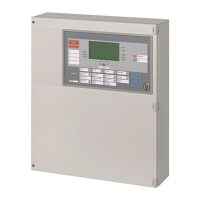
